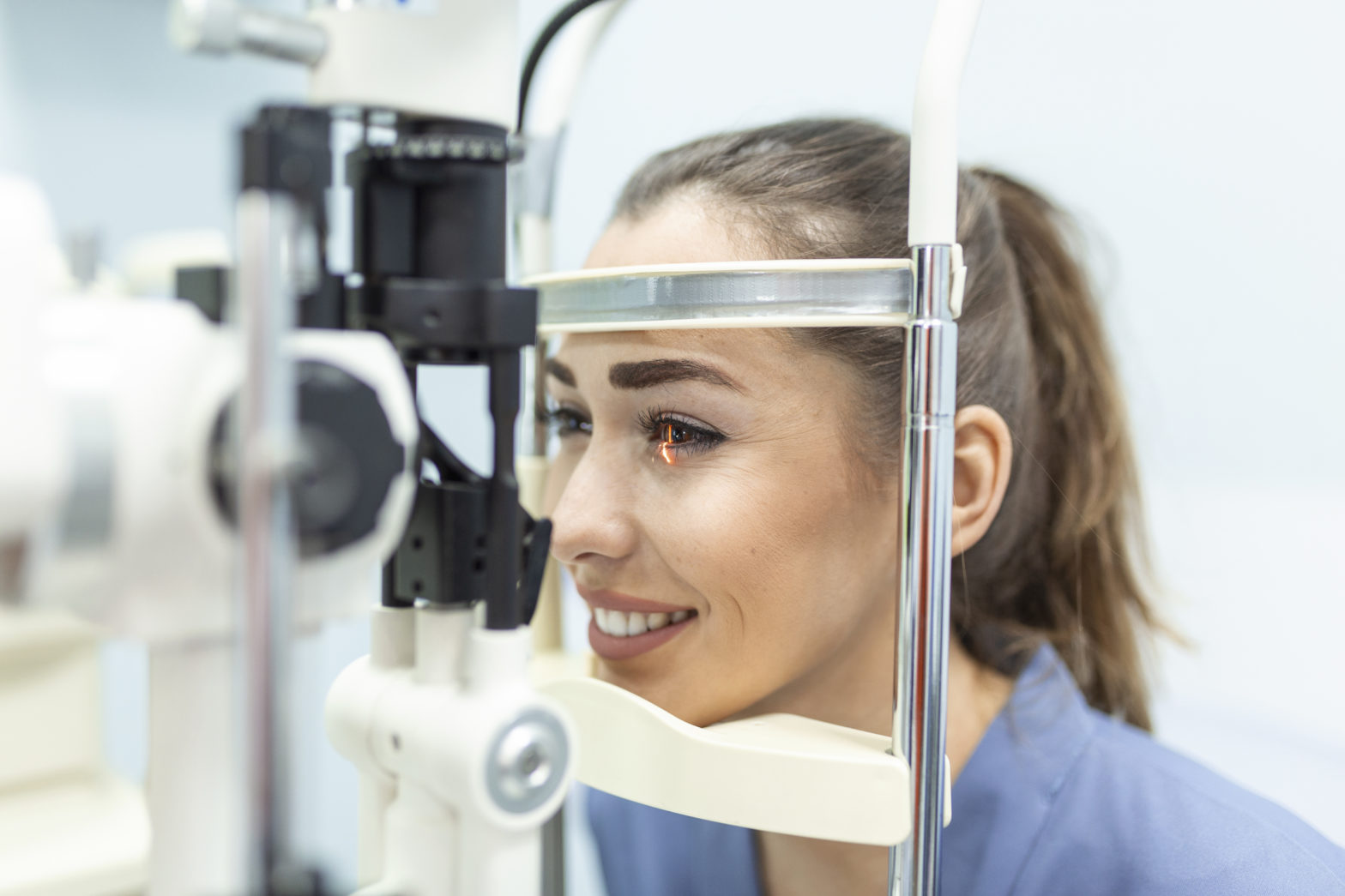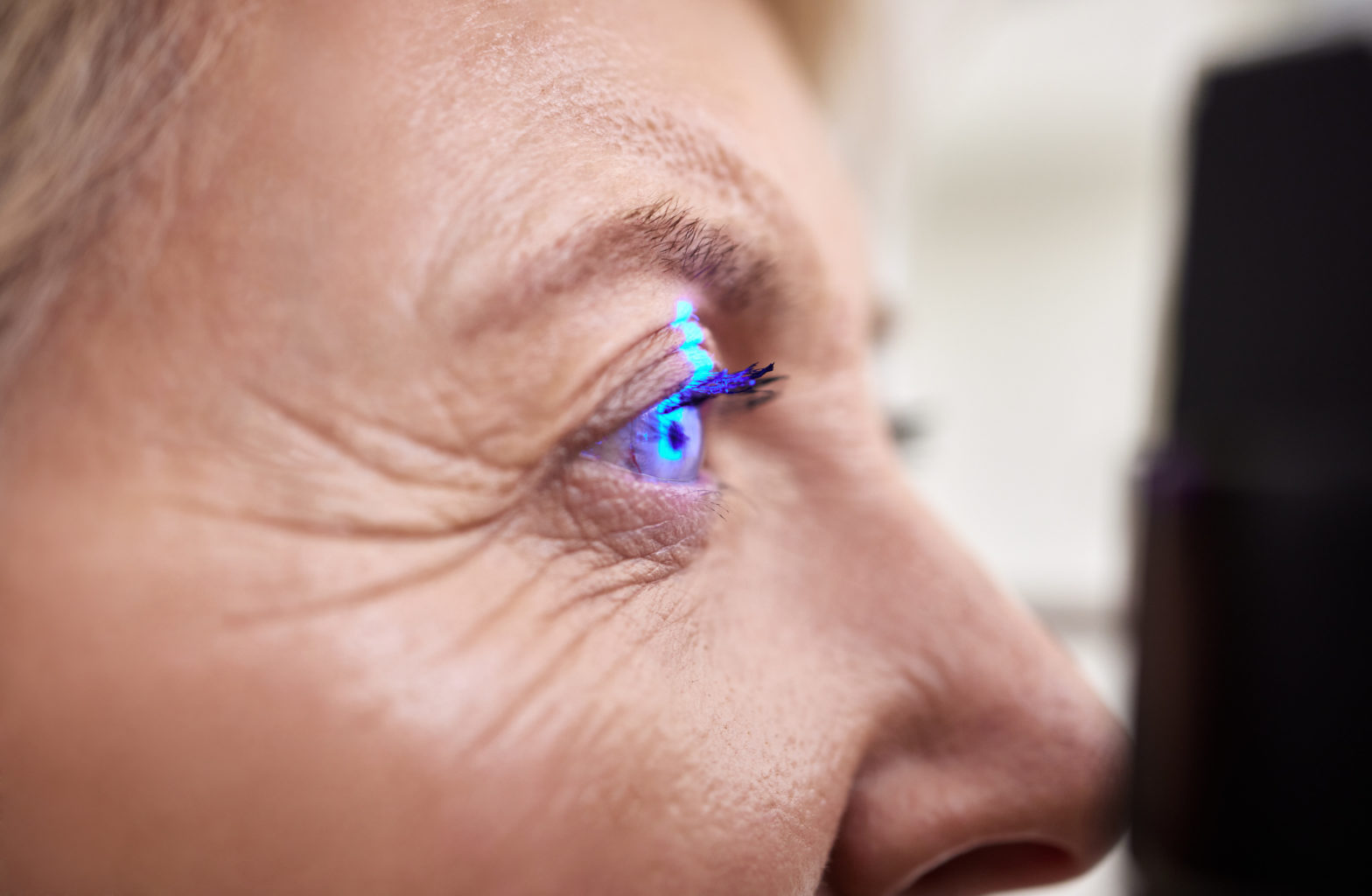എന്താണ് ഗ്ലോക്കോമ?
Glaucoma is a silent thief of sight—one of the leading causes of irreversible blindness worldwide. This progressive eye disease damages the optic nerve due to increased intraocular pressure, leading to gradual vision loss. The most alarming part? It often creeps in without noticeable symptoms until significant damage is done.
Understanding glaucoma, its causes, symptoms, and prevention methods can help safeguard your vision.
What Are the Symptoms of Glaucoma?
Glaucoma symptoms vary depending on the type and severity of the condition. While some people may experience gradual vision changes, others may notice sudden and severe symptoms. Below are the warning signs:
1. Loss of Vision
One of the most significant indicators of glaucoma is glaucoma vision deterioration, where blind spots appear in peripheral or central vision.
2. Blurry Vision
Blurred or hazy vision is an early warning sign, especially in angle-closure glaucoma where the pressure spikes suddenly.
3. Persistent Headache
High intraocular pressure can lead to intense headaches, often accompanied by eye pain.
4. Eye Redness
Redness in the eye is another symptom of glaucoma disease, indicating increased intraocular pressure or inflammation.
5. Stomach Upset, Nausea, and Vomiting
In acute cases, sudden pressure spikes can lead to nausea and vomiting, often misattributed to other conditions.
6. Pain in the Eye
Discomfort or severe pain in the eye may indicate phacolytic glaucoma or phacomorphic glaucoma, where lens changes obstruct normal fluid drainage.
7. Early Presbyopia
Difficulty focusing on nearby objects may suggest early onset of eye disorders linked to glaucoma.

ഗ്ലോക്കോമയുടെ കാരണങ്ങൾ
Several factors contribute to glaucoma. While some are hereditary, others arise due to lifestyle and medical conditions. Glaucoma Causes Included:
1. Build-up of Aqueous Humor Inside the Eye
The eye maintains internal pressure by producing and draining aqueous humor. A blockage in this drainage system can lead to excessive pressure.
2. Genetic Reasons
Family history significantly increases the risk of developing glaucoma symptoms over time.
3. Birth Defects
Congenital defects in the eye’s drainage system can cause childhood glaucoma.
4. Blunt or Chemical Injury
Trauma or exposure to harmful chemicals can disrupt the normal flow of fluids inside the eye.
5. Acute Eye Infection
Certain infections cause inflammation and scarring, leading to glaucoma disease.
6. Blockage by Blood Vessels Inside the Eye
Poor circulation can cause vessel blockages, increasing the risk of glaucoma vision loss.
7. Inflammatory Conditions
Autoimmune diseases like uveitis can trigger secondary glaucoma.
ഗ്ലോക്കോമയുടെ തരങ്ങൾ
Glaucoma is not a one-size-fits-all disease. It manifests in different forms, each requiring specific treatments.
ജന്മനായുള്ള ഗ്ലോക്കോമ
Present at birth due to improper development of the eye’s drainage system.
ലെൻസ് ഇൻഡ്യൂസ്ഡ് ഗ്ലോക്കോമ
Occurs when changes in the lens obstruct normal fluid drainage, leading to phacolytic glaucoma or phacomorphic glaucoma.
മാരകമായ ഗ്ലോക്കോമ
A rare but severe form that can occur post-surgery, leading to rapid vision loss.
ദ്വിതീയ ഗ്ലോക്കോമ
Caused by medical conditions like diabetes, trauma, or prolonged use of steroids.
ഓപ്പൺ ആംഗിൾ ഗ്ലോക്കോമ
The most common form, where pressure builds up gradually over time without early symptoms.
അടഞ്ഞ ആംഗിൾ ഗ്ലോക്കോമ
A sudden increase in eye pressure due to blocked drainage, requiring immediate medical attention.
ഗ്ലോക്കോമ അപകട ഘടകങ്ങൾ
Are you at risk? Identifying these factors can help with early detection and prevention.
1. Are You Over 60 Years of Age?
Age is a significant risk factor, as the drainage system naturally weakens over time.
2. Have High Internal Eye Pressure?
Elevated intraocular pressure is a primary contributor to glaucoma.
3. Have a Family Member Diagnosed with Glaucoma?
A strong genetic link exists, making family history a key risk factor.
4. Have Certain Medical Conditions?
Diabetes, hypertension, and anemia increase glaucoma susceptibility.
5. Have Thin Corneas?
Thin corneas lead to inaccurate pressure readings, masking high intraocular pressure.
6. Have Extreme Nearsightedness or Farsightedness?
Severe refractive errors alter the eye’s anatomy, increasing glaucoma risk.
7. Have Had കണ്ണിന് പരിക്കുകൾ or Surgeries?
Trauma and surgical procedures can alter fluid dynamics inside the eye.
8. Taking Corticosteroids for a Long Time?
Prolonged steroid use can trigger secondary glaucoma.

How to Prevent Glaucoma
While glaucoma cannot be completely prevented, early detection and lifestyle changes can slow its progression.
1. Have Eye Checkups Often
Routine exams help detect glaucoma symptoms before irreversible damage occurs.
2. Be Aware of Your Family’s Medical History
If glaucoma runs in your family, regular screenings are essential.
3. Keep Fit and Eat Healthy
A diet rich in leafy greens, omega-3 fatty acids, and antioxidants promotes eye health.
4. Protect Your Eyes While Performing Tasks That Could Cause Injuries
Wearing protective eyewear during sports or hazardous activities prevents trauma-induced glaucoma.
Glaucoma is a serious but manageable condition if diagnosed early. Prioritizing regular eye exams, understanding risk factors, and taking preventive measures can help protect your sight. If you experience any glaucoma symptoms, consult an eye specialist immediately.
Frequently Asked Questions (FAQs) about Glaucoma
ഗ്ലോക്കോമ രോഗം എത്രത്തോളം സാധാരണമാണ്?
ഒപ്റ്റിക് നാഡിക്ക് കേടുപാടുകൾ വരുത്തുന്ന ഒരു സാധാരണ നേത്രരോഗമാണ് ഗ്ലോക്കോമ. കണ്ണുകളിൽ നിന്ന് തലച്ചോറിലേക്ക് വിവരങ്ങൾ കൈമാറുന്ന ഒപ്റ്റിക് നാഡിക്ക് സംഭവിക്കുന്ന ഈ കേടുപാടുകൾ കാഴ്ച നഷ്ടത്തിലേക്ക് നയിക്കുന്നു. ശരിയായി ചികിത്സിച്ചില്ലെങ്കിൽ, കാഴ്ച നഷ്ടം താൽക്കാലികമോ ശാശ്വതമോ ആകാം. ഇൻട്രാക്യുലർ പ്രഷർ (IOP) എന്നും അറിയപ്പെടുന്ന കണ്ണിന്റെ ആന്തരിക ദ്രാവക മർദ്ദത്തിലെ മാറ്റമാണ് ഗ്ലോക്കോമയുടെ ഏറ്റവും സാധാരണമായ കാരണം.
ഗ്ലോക്കോമ ആഗോളതലത്തിൽ 70 ദശലക്ഷം ആളുകളെ ബാധിക്കുന്നു. 2020-ൽ, ഗ്ലോക്കോമ രോഗം ലോകമെമ്പാടുമുള്ള 80 ദശലക്ഷത്തിലധികം വ്യക്തികളെ ബാധിക്കും, 2040-ഓടെ ഇത് 111 ദശലക്ഷത്തിലധികമായി ഉയരുമെന്ന് പ്രതീക്ഷിക്കുന്നു. മാറ്റാനാവാത്ത അന്ധതയുടെ പ്രധാന കാരണം ഗ്ലോക്കോമയാണ്, ഇത് ലോകമെമ്പാടുമുള്ള അന്ധതയുടെ 12.3% ആണ്.
തുറന്ന കോണും അടച്ച ആംഗിൾ ഗ്ലോക്കോമയും തമ്മിലുള്ള വ്യത്യാസം എന്താണ്?
ഈ രണ്ട് തരത്തിലുള്ള ഗ്ലോക്കോമയെ കുറിച്ചുള്ള ഒരു ഉൾക്കാഴ്ച ഞങ്ങൾ ചുവടെ നൽകിയിരിക്കുന്നു:
- ഓപ്പൺ ആംഗിൾ ഗ്ലോക്കോമ: ഗ്ലോക്കോമയുടെ ഏറ്റവും സാധാരണമായ തരം ഓപ്പൺ ആംഗിൾ ഗ്ലോക്കോമയാണ്. ഇതിന് ആദ്യം ലക്ഷണങ്ങളില്ല; എന്നിരുന്നാലും, ചില സമയങ്ങളിൽ വശത്തെ (പെരിഫറൽ) കാഴ്ച നഷ്ടപ്പെടും, ചികിത്സ കൂടാതെ, ഒരു വ്യക്തി പൂർണ്ണമായും അന്ധനാകാം.
- ക്ലോസ്ഡ് ആംഗിൾ ഗ്ലോക്കോമ: ആംഗിൾ-ക്ലോഷർ ഗ്ലോക്കോമ, ക്ലോസ്ഡ് ആംഗിൾ ഗ്ലോക്കോമ എന്നും അറിയപ്പെടുന്നു, ഇത് വളരെ സാധാരണമല്ലാത്ത ഗ്ലോക്കോമയാണ്. കണ്ണിലെ ഡ്രെയിനേജ് സിസ്റ്റം പൂർണ്ണമായും തടസ്സപ്പെടുമ്പോൾ ഇത് സംഭവിക്കുന്നു, ഇത് കണ്ണിനുള്ളിലെ മർദ്ദം അതിവേഗം ഉയരുന്നു.
ഗ്ലോക്കോമയുടെ കാരണങ്ങളിലൊന്ന് പാരമ്പര്യമാകുമോ?
ചില സന്ദർഭങ്ങളിൽ ഗ്ലോക്കോമ പാരമ്പര്യമായി ഉണ്ടാകാം, ലോകമെമ്പാടുമുള്ള നിരവധി വിദഗ്ധർ ജീനുകളെക്കുറിച്ചും രോഗത്തെ അവയുടെ ഫലങ്ങളെക്കുറിച്ചും ഗവേഷണം നടത്തുന്നു. ഗ്ലോക്കോമ എല്ലായ്പ്പോഴും പാരമ്പര്യമല്ല, രോഗത്തിന്റെ തുടക്കത്തിലേക്ക് നയിക്കുന്ന സാഹചര്യങ്ങൾ ഇതുവരെ പൂർണ്ണമായി മനസ്സിലാക്കിയിട്ടില്ല.
എന്താണ് സാധാരണ ഇൻട്രാക്യുലർ മർദ്ദം ആയി കണക്കാക്കുന്നത്?
കണ്ണിന്റെ മർദ്ദം അളക്കുന്നത് മെർക്കുറി മില്ലിമീറ്ററിലാണ് (mm Hg). കണ്ണിന്റെ മർദ്ദത്തിന്റെ സാധാരണ പരിധി 12-22 mm Hg ആണ്, അതേസമയം 22 mm Hg-ൽ കൂടുതലുള്ള മർദ്ദം അസാധാരണമായി കണക്കാക്കപ്പെടുന്നു. കണ്ണിലെ മർദ്ദം കൊണ്ട് മാത്രം ഗ്ലോക്കോമ ഉണ്ടാകില്ല. എന്നിരുന്നാലും, ഇത് ഗണ്യമായ അപകട ഘടകമാണ്. ഉയർന്ന നേത്ര സമ്മർദ്ദമുള്ള വ്യക്തികൾ ഗ്ലോക്കോമയുടെ ലക്ഷണങ്ങൾ പരിശോധിക്കുന്നതിനായി ഒരു നേത്ര പരിചരണ വിദഗ്ദ്ധനെക്കൊണ്ട് സമഗ്രമായ നേത്ര പരിശോധനകൾ നടത്തണം.
ഗ്ലോക്കോമയ്ക്ക് ചികിത്സയുണ്ടോ?
Unfortunately, there is no glaucoma cure, and the vision loss resulted due to it is irreversible. If someone suffers from open-angle glaucoma, it has to be monitored for the rest of their life.
എന്നിരുന്നാലും, മരുന്നുകൾ, ലേസർ ചികിത്സ, ശസ്ത്രക്രിയ എന്നിവ ഉപയോഗിച്ച് അധിക കാഴ്ച നഷ്ടം മന്ദഗതിയിലാക്കാനോ നിർത്താനോ കഴിയും. ഇവിടെ ഓർമ്മിക്കേണ്ട ഏറ്റവും പ്രധാനപ്പെട്ട കാര്യം, നിങ്ങളുടെ കാഴ്ചയെ സംരക്ഷിക്കുന്നതിനുള്ള ആദ്യപടി ഒരു രോഗനിർണയം നടത്തുക എന്നതാണ്. അതിനാൽ, നിങ്ങളുടെ കാഴ്ചയിൽ എന്തെങ്കിലും അസ്വസ്ഥത അനുഭവപ്പെടുകയാണെങ്കിൽ അത് ഒരിക്കലും അവഗണിക്കരുത്.
ഗ്ലോക്കോമയും നേത്ര രക്താതിമർദ്ദവും തമ്മിലുള്ള വ്യത്യാസം എന്താണ്?
ക്ലാസിക് ഒപ്റ്റിക് നാഡിയിലും കാഴ്ചയിലും വ്യതിയാനങ്ങൾ സംഭവിക്കുമ്പോൾ, ഗ്ലോക്കോമ രോഗം നിർണ്ണയിക്കപ്പെടുന്നു, സാധാരണയായി ഉയർന്ന കണ്ണ് മർദ്ദം, എന്നാൽ അപൂർവ്വമായി സാധാരണ മർദ്ദം. ഇൻട്രാക്യുലർ മർദ്ദം സാധാരണയേക്കാൾ കൂടുതലായിരിക്കുമ്പോൾ നേത്ര ഹൈപ്പർടെൻഷൻ സംഭവിക്കുന്നു, പക്ഷേ വ്യക്തി ഗ്ലോക്കോമയുടെ സൂചനകൾ കാണിക്കുന്നില്ല.
'ടണൽ വിഷൻ' എന്താണ് അർത്ഥമാക്കുന്നത്?
ഗ്ലോക്കോമ രോഗത്തിന്റെ പ്രാരംഭ ഘട്ടത്തിൽ വേണ്ടത്ര ചികിത്സിച്ചില്ലെങ്കിൽ, അത് പെരിഫറൽ കാഴ്ചയെ സാരമായി ബാധിക്കുകയും 'ടണൽ വിഷൻ' എന്നറിയപ്പെടുന്ന അവസ്ഥയിലേക്ക് നയിക്കുകയും ചെയ്യും. ടണൽ വിഷൻ നിങ്ങളുടെ 'സൈഡ് വിഷൻ' ഇല്ലാതാക്കുന്നു, നിങ്ങളുടെ കാഴ്ചാ മണ്ഡലത്തെ നിങ്ങളുടെ സെൻട്രൽ വിഷൻ അല്ലെങ്കിൽ നേരെ മുന്നിലുള്ള ചിത്രങ്ങളിലേക്ക് പരിമിതപ്പെടുത്തുന്നു.
എങ്ങനെയാണ് ഗ്ലോക്കോമ രോഗം നിർണ്ണയിക്കുന്നത്?
ഗ്ലോക്കോമയുടെ ലക്ഷണങ്ങൾ നിങ്ങൾക്ക് അനുഭവപ്പെടുന്നുണ്ടെങ്കിൽ, പൂർണ്ണമായ കണ്ണ് പരിശോധനയിൽ അത് കണ്ടെത്താനാകും. പരിശോധന ലളിതവും വേദനയില്ലാത്തതുമാണ്: ഗ്ലോക്കോമയ്ക്കും മറ്റ് നേത്ര പ്രശ്നങ്ങൾക്കും നിങ്ങളുടെ കണ്ണുകൾ പരിശോധിക്കുന്നതിന് മുമ്പ് നിങ്ങളുടെ ഡോക്ടർ കണ്ണ് തുള്ളികൾ ഉപയോഗിച്ച് നിങ്ങളുടെ കൃഷ്ണമണിയെ വിശാലമാക്കും (വിശാലമാക്കും).
നിങ്ങളുടെ സൈഡ് വിഷൻ പരിശോധിക്കാൻ ഒരു വിഷ്വൽ ഫീൽഡ് ടെസ്റ്റ് പരീക്ഷയിൽ ഉൾപ്പെടുത്തിയിട്ടുണ്ട്. ഗ്ലോക്കോമയുടെ കുടുംബ ചരിത്രമുള്ള ആളുകൾ അവരുടെ കണ്ണിലെ മർദ്ദവും ഒപ്റ്റിക് നാഡികളും പതിവായി പരിശോധിക്കണം, കാരണം അവർക്ക് ഈ അവസ്ഥ വികസിപ്പിക്കാനുള്ള സാധ്യത കൂടുതലാണ്.

കണ്ണിന്റെ പ്രശ്നം അവഗണിക്കരുത്!
ഓൺലൈൻ വീഡിയോ കൺസൾട്ടേഷനോ ആശുപത്രി അപ്പോയിന്റ്മെന്റോ ബുക്ക് ചെയ്തുകൊണ്ട് നിങ്ങൾക്ക് ഇപ്പോൾ ഞങ്ങളുടെ മുതിർന്ന ഡോക്ടർമാരുമായി ബന്ധപ്പെടാം
ഇപ്പോൾ ഒരു അപ്പോയിന്റ്മെന്റ് ബുക്ക് ചെയ്യുക




